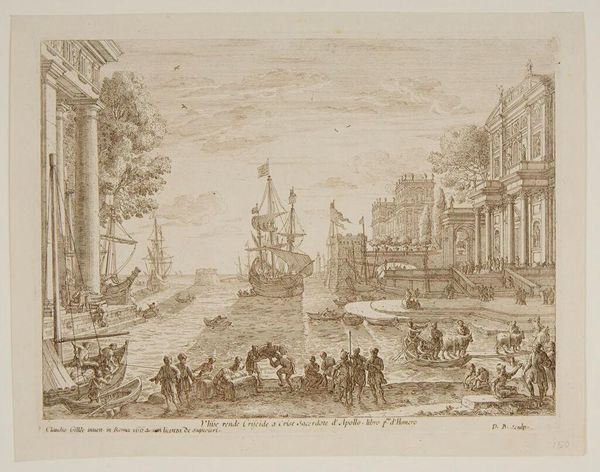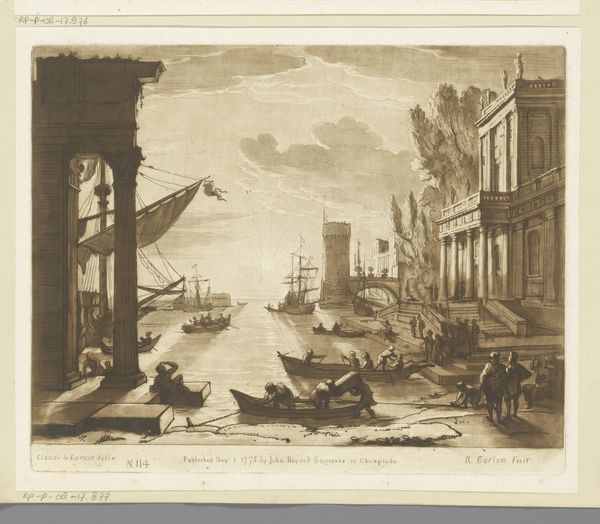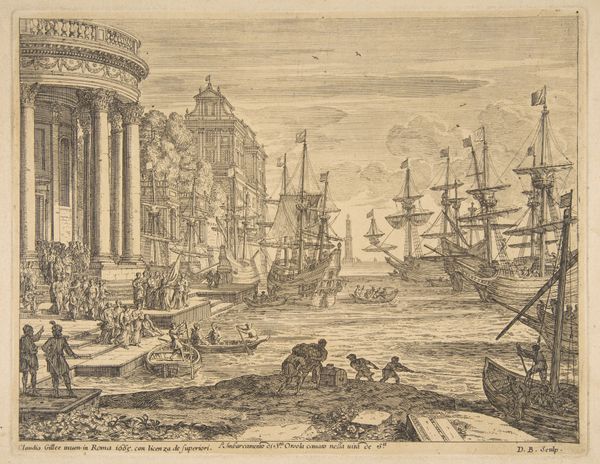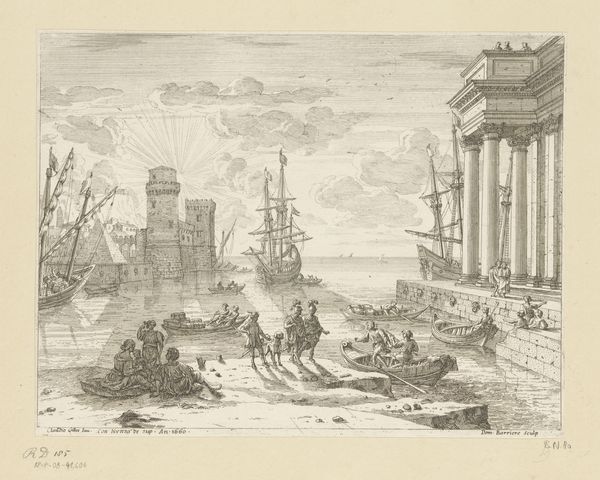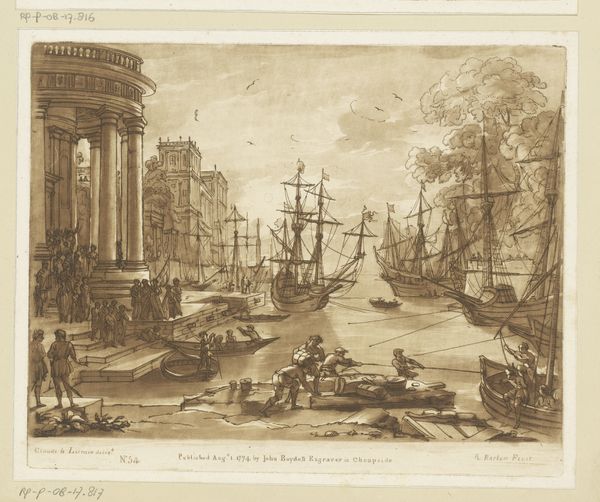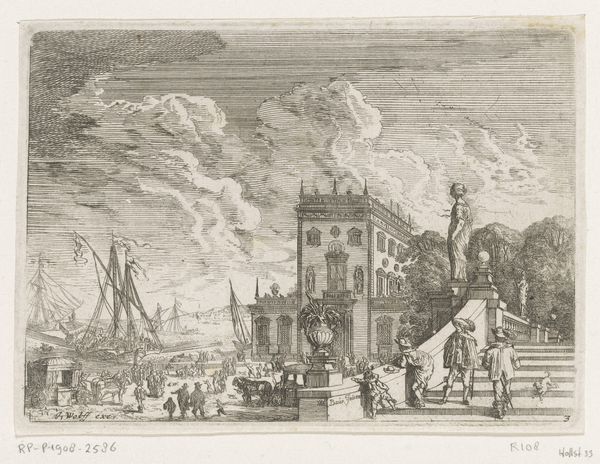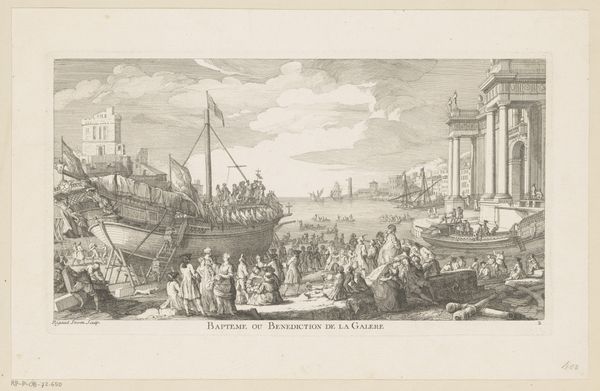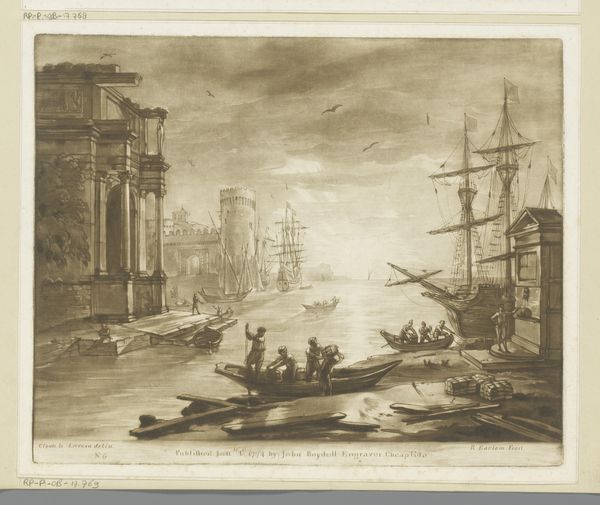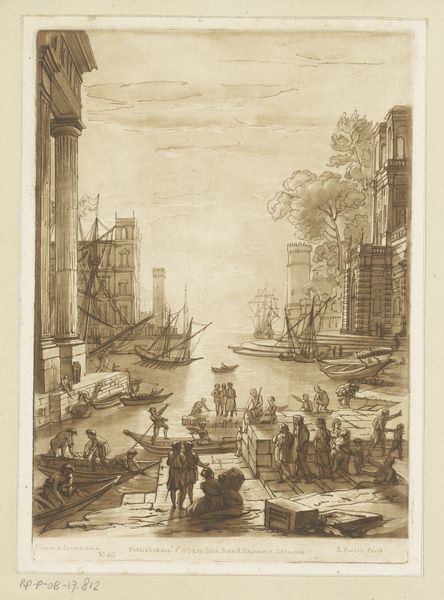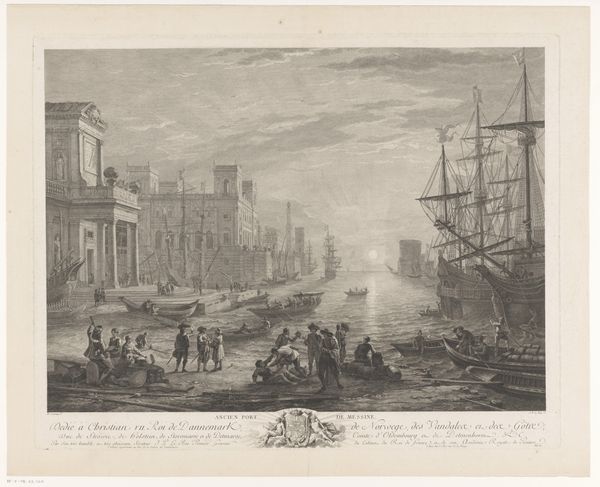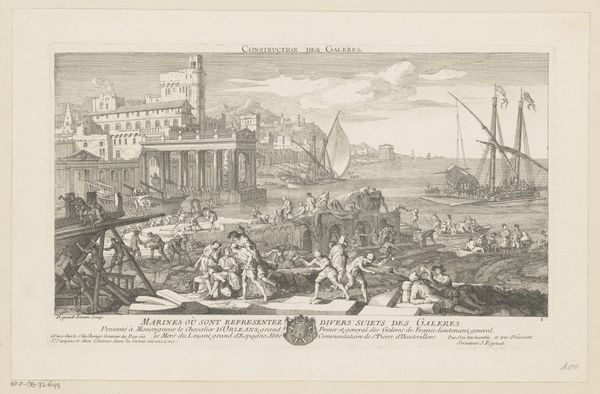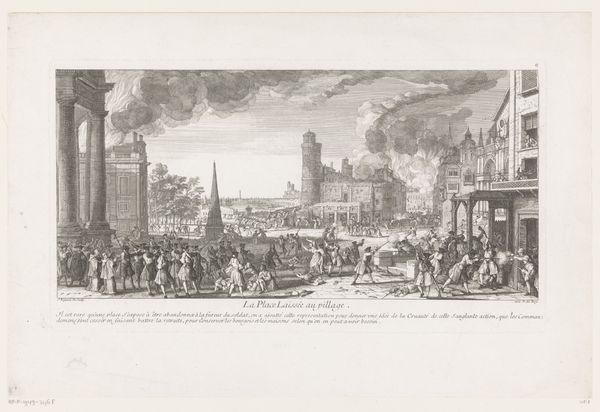
print, engraving
#
baroque
# print
#
landscape
#
cityscape
#
history-painting
#
engraving
Dimensions: height 200 mm, width 260 mm
Copyright: Rijks Museum: Open Domain
Curator: We are looking at “The Return of Chryseis to Her Father,” an engraving by Dominique Barrière, dating from after 1664. My initial impression is one of controlled grandeur, an impressive orchestration of architectural elements and bustling figures. Editor: The medium of engraving lends itself beautifully to capturing this teeming scene of maritime activity and opulent buildings, but the lines seem to be just depicting the opulence rather than engaging in what this costs from a labor point of view. What kind of work was put in the engravings to get this level of refinement? Curator: Notice how Barrière uses line to define depth and volume? The architecture recedes convincingly into the distance, guided by strict orthogonals and the delicate cross-hatching that model the forms. This engraving relies heavily on perspective and spatial organization. Editor: Right, it also looks at this society through the lenses of trade, colonialism, extraction, all made visible via this very clean portrayal! So, beyond this superficial appearance, what type of exploitation is required in order to return a mythical priestess to her mythical father? Curator: You’re looking beyond the subject matter to consider labor and production. It’s interesting. Semiotically, the recurring motifs of classical architecture and maritime activity signify power, trade, and a connection to a classical past, perhaps meant to legitimize authority. Editor: Legitimization at what cost! If you were working with a material like oil painting for instance, this cost would have been part of the history and physical support, here the message is the priority as it comes off from the etching process, no layers, just straight to the point. Curator: Perhaps by simplifying, Barrière achieved an austere aesthetic. Looking again, it’s an almost academic study of compositional balance and the power of line. I had failed to think about other type of medium. Editor: We can look to art history, the processes that enable the image itself, but also ask hard questions about how empires narrate their dominance, how these processes themselves leave their mark on both maker and audience, through the artwork.
Comments
No comments
Be the first to comment and join the conversation on the ultimate creative platform.
